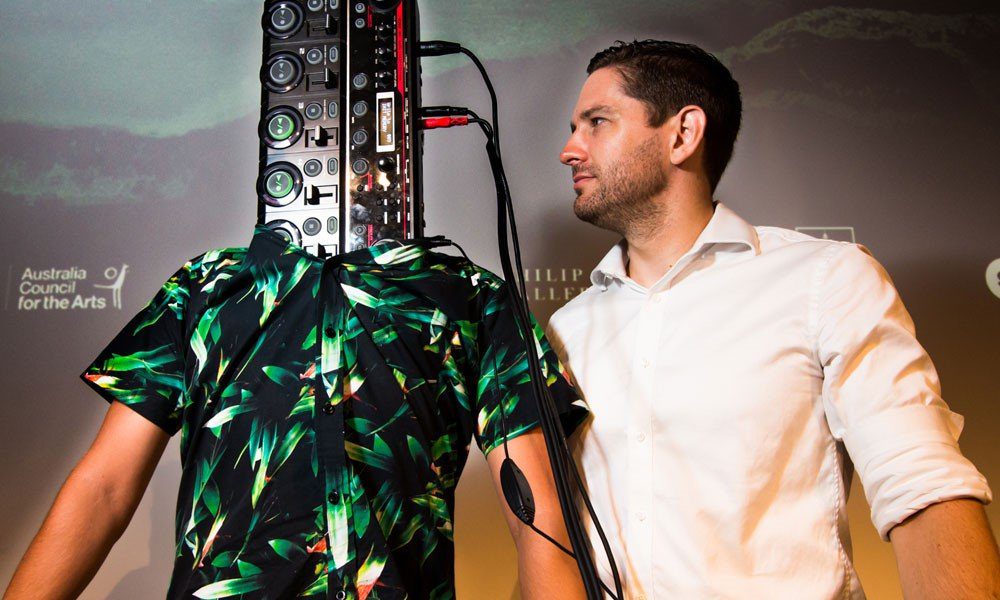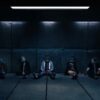In 1913, Igor Stravinsky was recruited to create works for the Ballet Russes and as part of a three part work released The Rite Of Spring: a scenario of primitive rituals celebrating spring with a young girl selected as the sacrificial gift and dancing herself to death. It was absolutely ahead of its time, drawing from Russian folk music and experimenting with classical tonality, meter, rhythm, stress and dissonance. This musical-choreographic work pushed boundaries in every way, causing somewhat of a ruckus to break out in the audience to the point where police were called in to eject some members.
While critics vehemently proclaimed the piece a scourge on refined music, it has become one of the most recorded works in the classical repertoire. But, hindsight is always twenty twenty. Looking back, the coming of atonality, dissonance and changes in meters and rhythm was imminent since Beethoven’s Symphony No 9 ‘Ode To Joy’ through to Liszt and Chopin. This same push persisted throughout the 20th century so far as to see the union of styles we never thought possible through technology, from rock n roll to jazz, hip hop and techno. Traditional classical music, while beautiful, has created a gap between the performer and audience to such a degree that in its quest searching for a higher art, it has evolved into virtual ostracism. The Queensland Symphony Orchestra has worked to their traditions while being relevant, recognising that while there is no compromise on perfection in skills, there are boundaries to break and gaps to bridge. This is so with their current collaborations, particularly with beatboxer Tom Thum and Australian conductor/ composer/ producer Gordon Hamilton.
Originally from Newcastle, Gordon lived in Germany’s Bremen for a few years before moving to Brisbane to take over the choir The Australian Voices as conductor. He now divides his time between conducting and composing. As a Brisbane boy, Tom has always been fascinated with making noises, pushing the limits of the human voice using a microphone. Internationally renowned for his incredible range of tones, voices, noises and sounds which you can view from the 2013 TEDxSydney here, Tom presents his ‘sonic tourettes’ to fascinated audiences around the world from street corners to stages. Presented by Brisbane Powerhouse and Queensland Symphony Orchestra, QSO teams up with Gordon and Tom to perform Thum Prints as part of the IRL Digital Festival celebrations. In the lead up to the unveiling of this innovative musical project, we sit down with Gordon and Tom and chat how a beatboxer and an orchestra unite for one incredible performance.
Berlin is the undisputed centre of electronic music. Gordon, has your time in Bremen influenced your outlook towards modern music?
Very much so. I heard quite a lot of extraordinary bands and was a really active listener in the performance and concert scene. So much of western and classical music originally comes from Germany, so to be in that country and experience that, changed the way I think about music and music history.
Are you planning on shocking audiences when you present Thum Prints at the Powerhouse?
Gordon: I think there are a few shocking things in it – not shocking in the sense of rioting and tearing people’s hair out and ripping seats apart, but there is rap, so it’s quite a sonic shock. It’s a pleasing one I think, to hear rap with an orchestra at the same time. It’s certainly something I’ve never heard before and as soon as Tom suggested it, I thought it was so cool. Things like beatboxing with an orchestra is bizarre, so I hope it throws a bucket of cold water over the audience’s ears.
Tom: I think it may offend some traditionalists with me slobbering all over some classics. That being said, I’m sure they wouldn’t even come if they saw a beatboxer was joining the orchestra. For my existing fan base, it may open up the orchestral realm to a whole new audience that would never have come along.
Gordon, given Tom isn’t traditionally trained, and you and the orchestra are, how have you managed to work together?
Tom is an incredible musician – he’s not just a party trick. He’s got really deeply-held thoughts and ideas behind his music. He doesn’t read music, which makes it a little challenging for us, but even though he doesn’t read it, he gets it. Tom and really great musicians – like Tommy Emmanuel and other jazz players – have their own internal language for sound. Tom just gets it. He understands structure, rhythm and colour, so all we need to do is change the way we call things. I don’t call things in ‘sharps’ and ‘flats’, I call them by different names and show him things on the piano so we have this back-and-forth that is actually very sophisticated. As a composer, it’s so refreshing to find someone who has all these ideas but has not been coloured by years of musical training. He has all the skill but not all of the training so he comes up with ideas I’ve never heard or thought of. I just take them and run with them, thankful that someone thought of them with me. What we are doing is a real collaboration – neither of us could do this without the other – and we are coming up with ideas for pieces and seeing them through while helping the other through the process.
Tom, you have always pushed boundaries – is this something you do knowingly or simply because you want to see if you can do it? What are you trying to achieve?
I think the main thing I am trying to achieve with my craft is longevity and artistic fulfilment. For me the build up to making it a viable career has been a long process. I try and think of ways to keep pushing along in a similar direction – just on different paths. I try to keep myself relevant to a greater audience. I think it’s far better to think passionately than to think professionally, as the professional side of things is usually the byproduct of being passionate about something anyways.
What are you trying to prove?
I’m trying to showcase how the term beatboxer doesn’t have to dwell solely within a narrow perception of what it should be. The voice is the most adaptable and remarkable instrument and after tens of thousands of years using our voices, humans are only scratching the surface of what it’s capable of.
What have you learnt working with QSO and what do you think has QSO learnt from working with you?
This has been the most concentrated learning period of my life. I have learnt things I have never even considered learning before. It’s like re-wiring my brain to think differently. Coming from my world of performance which is improvised and very free to working within the realms of a score and a conductor and a sixteen-piece orchestra has been very challenging – in the best possible way. Not being able to read sheet music has been a big challenge for me. I generally try and work from memory, my own barely decipherable notes and a form of notation I invented for this particular show.
So, in a nutshell, what can we expect from Thum Prints?
Expect one part beatboxer, sixteen parts orchestra, add a heavy dash of the unexpected and cook at 115 decibels for an hour.
Photographer: Joseph Byford



